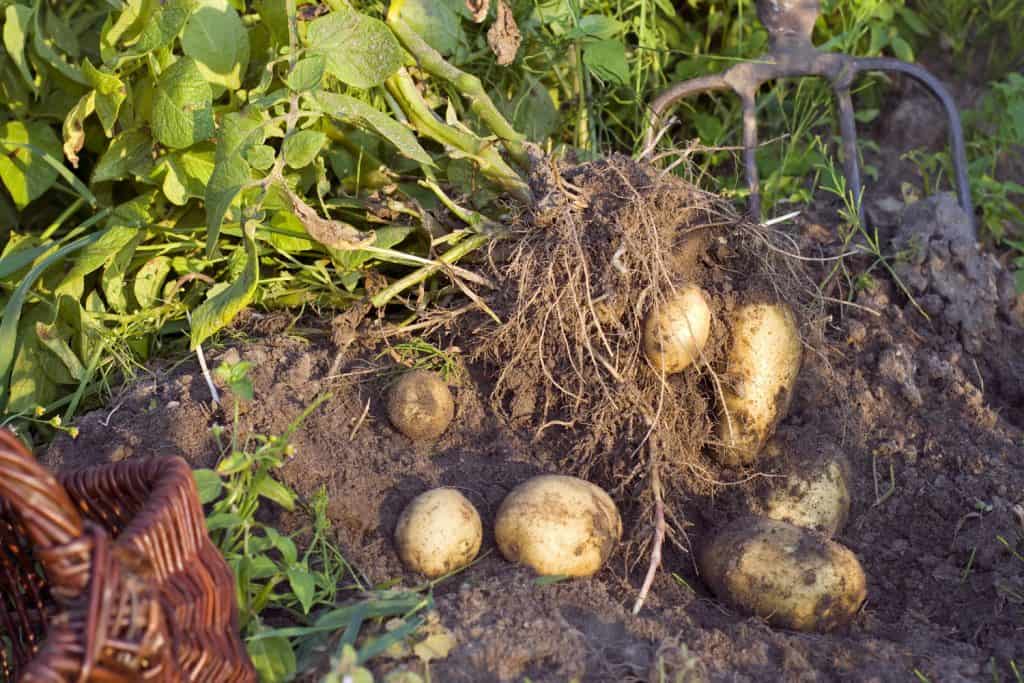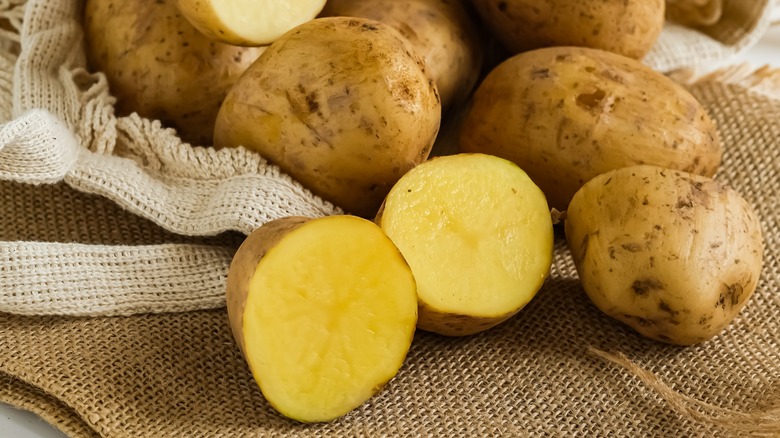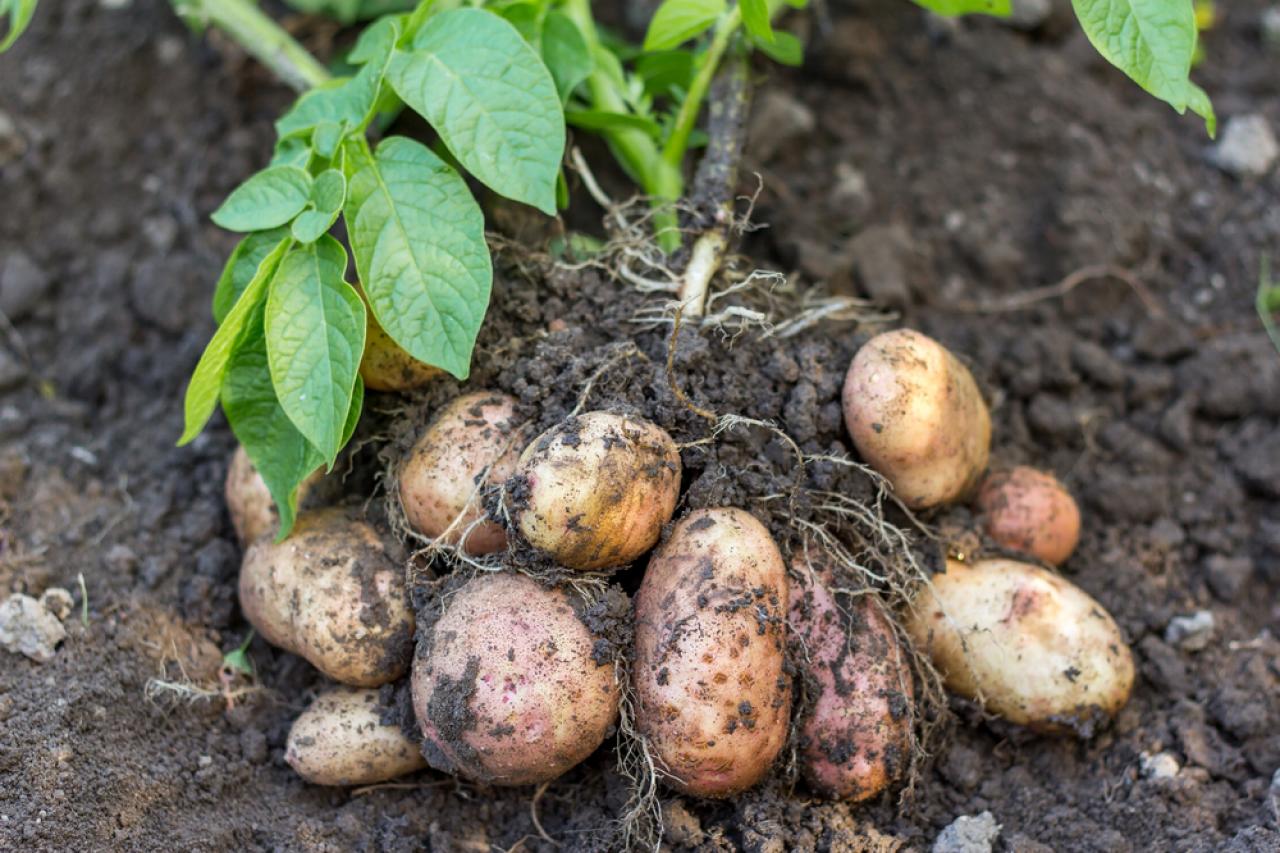What Makes a Potato ‘New’?
New potatoes, a type of potato that is harvested before reaching full maturity, have been a staple in many cuisines for centuries. But what is a new potato, exactly? The answer lies in their unique characteristics, which set them apart from regular potatoes. New potatoes are typically harvested within 10 to 12 weeks of planting, when the tubers are still small and immature. This early harvest allows the potatoes to retain their natural sweetness and moisture, making them a popular choice for cooking. With a rich history dating back to ancient times, new potatoes have been enjoyed globally, featuring prominently in various cuisines, including French, German, and Scandinavian cooking. Their unique flavor profile and texture have made them a staple in many traditional recipes, and their popularity continues to grow to this day. So, what is a new potato? Simply put, it’s a potato that’s harvested at the peak of freshness, offering a sweeter, waxy texture and a more delicate flavor than its mature counterpart. Whether you’re a seasoned chef or a culinary newbie, understanding what makes a potato ‘new’ is essential to unlocking their full potential in the kitchen. In fact, what is a new potato is a question that has puzzled many a cook, but the answer lies in their unique characteristics, which set them apart from regular potatoes. By understanding these differences, you can unlock the full potential of new potatoes and take your cooking to the next level.
The Science Behind New Potatoes: How They’re Grown and Harvested
The agricultural process of growing new potatoes is a delicate art that requires specific conditions to produce the desired outcome. New potatoes thrive in cool, moist climates with well-drained soil that is rich in organic matter. Farmers typically plant new potato varieties in early spring, when the soil can be worked and the air temperature is around 40°F (4°C). As the plants grow, they require consistent moisture and careful management to prevent disease and pests. The ideal time for harvesting new potatoes is when the tubers are still small and immature, usually within 10 to 12 weeks of planting. This early harvest is crucial, as it allows the potatoes to retain their natural sweetness and moisture, resulting in a sweeter, waxy texture. The harvesting process itself is also critical, as new potatoes are typically dug by hand to avoid damaging the delicate tubers. By understanding the science behind growing and harvesting new potatoes, cooks can appreciate the care and attention that goes into producing these delicious and nutritious spuds.
How to Identify New Potatoes at the Market or Grocery Store
When it comes to selecting the best new potatoes for cooking, it’s essential to know what to look for at the market or grocery store. One of the most noticeable differences between new potatoes and regular potatoes is their size. New potatoes are typically smaller, with a diameter of around 1-2 inches (2.5-5 cm). They also have a thinner, more delicate skin that is often left unwashed to preserve their natural sweetness. Another key identifier is their sweeter aroma, which is more pronounced than regular potatoes. When choosing new potatoes, look for those that are firm and free of bruises or blemishes. Avoid potatoes with green skin or sprouts, as they may be past their prime. By selecting the right new potatoes, you’ll be able to unlock their full flavor and texture potential in your cooking. Remember, what is a new potato? It’s a potato that’s harvested at the peak of freshness, offering a sweeter, waxy texture and a more delicate flavor than its mature counterpart. With these tips, you’ll be well on your way to cooking with the best new potatoes.
The Nutritional Benefits of New Potatoes: A Healthier Alternative
New potatoes offer a range of nutritional benefits that make them a healthier alternative to regular potatoes. One of the key advantages is their higher water content, which makes them lower in calories and carbohydrates. In fact, a single serving of new potatoes contains only about 70 calories, compared to around 110 calories in a serving of regular potatoes. New potatoes are also rich in antioxidants, including flavonoids and carotenoids, which can help protect against cell damage and reduce the risk of chronic diseases. Additionally, they are a good source of fiber, potassium, and vitamins C and B6, making them a nutritious addition to a balanced diet. The unique nutritional profile of new potatoes also makes them an excellent choice for people with specific dietary needs, such as those managing blood sugar levels or following a weight loss program. By incorporating new potatoes into your meals, you can reap the benefits of a healthier, more balanced diet. Remember, what is a new potato? It’s a potato that’s harvested at the peak of freshness, offering a sweeter, waxy texture and a more delicate flavor than its mature counterpart, along with a range of nutritional benefits that make it a great addition to a healthy diet.
Cooking with New Potatoes: Tips and Tricks for Perfect Preparation
Cooking with new potatoes requires a gentle touch to bring out their natural sweetness and texture. One of the most popular ways to prepare new potatoes is by boiling them. To do this, simply place the potatoes in a pot of salted water, cover, and bring to a boil. Reduce the heat and simmer for 10-15 minutes, or until they’re tender when pierced with a fork. Another great way to cook new potatoes is by roasting them in the oven. Cut the potatoes into wedges or thin slices, toss with olive oil, salt, and pepper, and roast at 425°F (220°C) for 20-25 minutes, or until crispy on the outside and tender on the inside. Grilling new potatoes is also a great option, adding a smoky flavor to their natural sweetness. Simply brush the potatoes with oil, season with salt and pepper, and grill over medium heat for 5-7 minutes per side, or until tender and slightly charred. When cooking with new potatoes, it’s essential to remember that they’re more delicate than regular potatoes, so be gentle when handling them to avoid bruising or breaking. By following these tips and tricks, you’ll be able to unlock the full flavor and texture potential of new potatoes in your cooking. What is a new potato? It’s a potato that’s harvested at the peak of freshness, offering a sweeter, waxy texture and a more delicate flavor than its mature counterpart, making it perfect for a variety of cooking methods.
New Potatoes in Different Cuisines: Exploring Global Recipes and Traditions
New potatoes have been a staple ingredient in various international cuisines for centuries, with each culture adding its unique twist to their preparation and presentation. In French cuisine, new potatoes are often used in dishes like pommes Anna, a layered potato dish cooked in butter and cream, or in salads like salade niçoise, where they’re paired with tuna, eggs, and olives. In Germany, new potatoes are a key ingredient in dishes like kartoffelpuffer, crispy potato pancakes served with apple compote and sour cream. Scandinavian cuisine also celebrates new potatoes, often boiling or steaming them and serving them with dill, butter, and sour cream. In some African countries, new potatoes are used in stews and soups, adding a burst of flavor and texture to these hearty dishes. What is a new potato? It’s a potato that’s harvested at the peak of freshness, offering a sweeter, waxy texture and a more delicate flavor than its mature counterpart, making it a versatile ingredient in global cuisine. From traditional recipes to modern twists, new potatoes continue to inspire chefs and home cooks around the world, adding a touch of elegance and sophistication to any meal.
The Art of Storing New Potatoes: Preserving Freshness and Flavor
Proper storage is crucial to maintaining the freshness and flavor of new potatoes. Unlike regular potatoes, new potatoes are more delicate and require special care to prevent spoilage and waste. To store new potatoes, it’s essential to keep them in a cool, dark place with good ventilation. The ideal storage temperature is between 40°F and 50°F (4°C and 10°C), with a relative humidity of 80-90%. This will help to slow down the metabolic process, preserving the potatoes’ natural sweetness and texture. It’s also important to store new potatoes away from direct sunlight, as light exposure can cause them to become green and toxic. When storing new potatoes, it’s best to keep them in a paper bag or breathable container, rather than a plastic bag, which can trap moisture and cause rot. By following these simple storage tips, you can enjoy your new potatoes for weeks to come, and unlock their full flavor and nutritional potential. What is a new potato? It’s a potato that’s harvested at the peak of freshness, offering a sweeter, waxy texture and a more delicate flavor than its mature counterpart, making it a valuable addition to any meal.
Conclusion: Unlocking the Full Potential of New Potatoes
In conclusion, new potatoes are a culinary treasure that offers a unique combination of flavor, texture, and nutrition. By understanding what is a new potato, how they’re grown and harvested, and how to identify, store, and cook them, you can unlock their full potential in the kitchen. Whether you’re a seasoned chef or a home cook, new potatoes are a versatile ingredient that can elevate any dish. With their sweeter, waxy texture and higher nutritional value, new potatoes are a healthier alternative to regular potatoes. So, go ahead and experiment with new potato recipes, explore their role in different cuisines, and discover the joy of cooking with these delicious and nutritious tubers. By doing so, you’ll not only enhance your culinary skills but also appreciate the rich flavor and texture that new potatoes bring to any meal. What is a new potato? It’s a potato that’s harvested at the peak of freshness, offering a sweeter, waxy texture and a more delicate flavor than its mature counterpart, making it a valuable addition to any kitchen.







